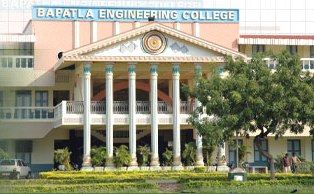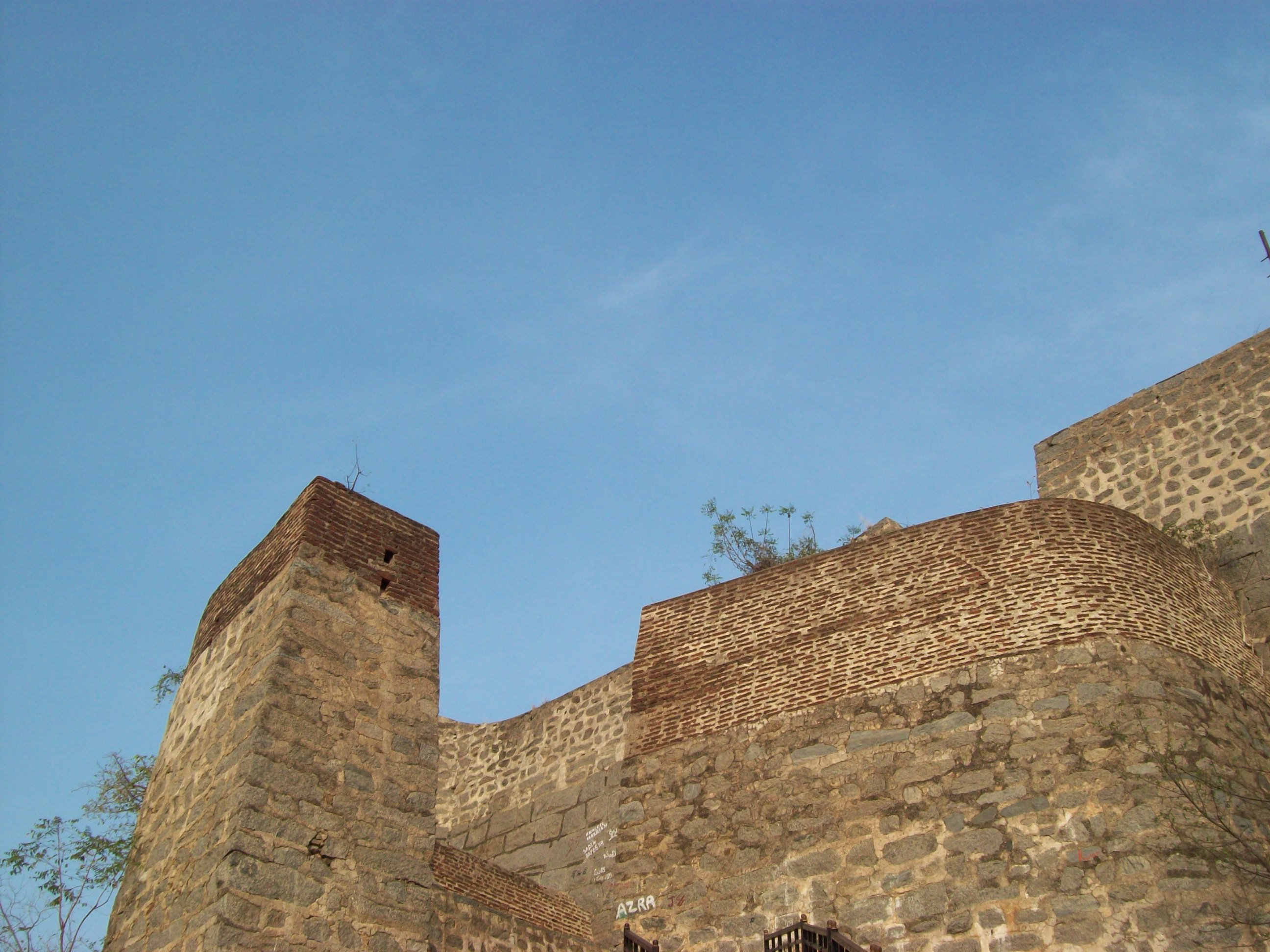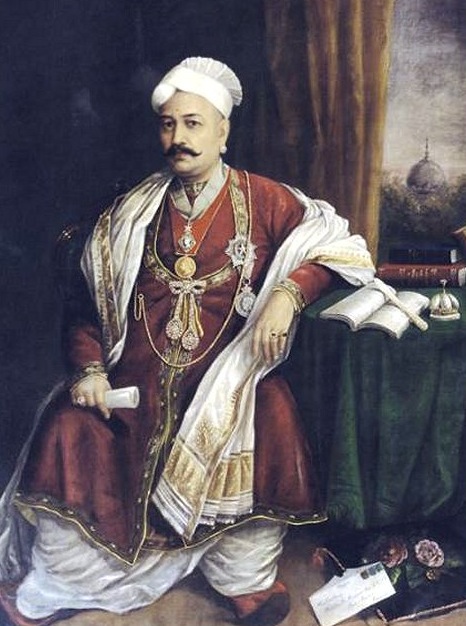|
Nanduri
Those with the last name Nanduri are said to hail from the village of Nanduru which is near Bapatla and Ponnur, small towns in the Guntur District of Andhra Pradesh, India. There is a village called Nanduru in East Godavari District of Andhra Pradesh as well which leads to some ambiguity. Those with this last name could be Niyogi Brahmins or Sri Vaishnava Brahmins or they could also be from a caste other than the Brahmin caste. One of the other known caste is Bhatraju. For the most part, those with this last name are predominantly Brahmins. Many have migrated from Nanduru and they have settled in various part of Andhra Pradesh. Some are known to have settled in a village known as Lingala, which in located in the Khammam District of Andhra Pradesh. Lingala is said to have been ruled by kings with the last name Nanduri hundreds of years ago. People with the last name are also prevalent in the Indian state of Maharashtra. In Maharashtra, near the city Nashik through which the Godavar ... [...More Info...] [...Related Items...] OR: [Wikipedia] [Google] [Baidu] |
Nanduri Ramamohanarao
Nanduri Ramamohanarao ( te, నండూరి రామమోహనరావు) (24 April 1927 – 2 September 2011) was a Telugu writer and journalist. He worked in multiple roles in Andhra Jyothy Telugu newspaper since its inception in 1960 till his retirement in 1994. He translated numerous works from English to Telugu. He also wrote a number of books for children. He was also a poet and lyricist. He was also a good music composer and singer. Life Rama Mohanarao was born in Vissannapeta mandal in Krishna District in Andhra Pradesh, India. He did his schooling in Nuzvid and Machilipatnam between 1937-1942. He pursued his higher education in Government Arts College at Rajahmundry between 1942-1947. He married Rajeswari in 1944. Nanduri worked in various editorial capacities, in "Andhra Patrika" Telugu newspaper, between 1948-1960. Later he rendered his services as honorary editor to Udayam daily. Later, he joined the newly formed newspaper "Andhrajyothy" in 1960, where he ret ... [...More Info...] [...Related Items...] OR: [Wikipedia] [Google] [Baidu] |
Nanduri Prasada Rao
Nanduri Prasada Rao (Telugu:నండూరి ప్రసాద రావు) NPR born as Nandury Durga Mallikarjuna Prasadarao was Prominent communist leader, contributed communist movement in India, he was former member of Indian Parliament upper house Rajya Sabha and former Member of Legislative council (MLC) of Andhra Pradesh. He actively participated in Indian freedom struggle. He was born to Shri Janakiramayya (father). Prasada Rao one of founding members of the Communist Party of India (Marxist) and Centre of Indian Trade Unions (CITU). He continued to be Central Committee member of CPI (M) till his death. He joined the freedom struggle while studying at the Banaras Hindu University. Inspired by Puchalapalli Sundarayya, he joined the communist party in 1934. He was founder of communist movement along with Puchalapalli Sundarayya, Chandra Rajeswara Rao, Harkishan Singh Surjeet, Makineni Basavapunnaiah and others. He organised Peasant movement in Munagala. He took part i ... [...More Info...] [...Related Items...] OR: [Wikipedia] [Google] [Baidu] |
Nanduri Venkata Subba Rao
Nanduri Venkata Subbarao F.A., B.A., B.L. (16 December 1895 – 29 May 1957) was a famous Telugu poet. His famous works include ''Yenki Patalu'' (an anthology of songs on and by a woman called Yenki). He was born in Vasanthavada in West Godavari district to Chinna Bapanna parents. His father was village ''Karanam''. He was closely related to Basavaraju Apparao, but considered his guru. After primary education at Eluru, he joined in Kakinada for College studies. Failing in some examinations, he was encouraged and shifted to Chennai. He passed F.A. and joined Madras Christian College. He worked as teacher for some time and succeeded in obtaining Bachelor in Law. He practiced law from 1926 onwards in Eluru. But his main ambition was poetry which he continued till the last days. Enki Paatalu Subba Rao conceptualized the idea of 'Enki Paatalu' during his student days at Madras Christian College in 1917–18. He used the local dialects of Godavari and Visakha areas in his p ... [...More Info...] [...Related Items...] OR: [Wikipedia] [Google] [Baidu] |
Ponnur
Ponnur is a town in Guntur district of the Indian state of Andhra Pradesh. There was a festival on full moon day in May. A road to Chandole goes south-east and comes to Nidubrolu, where there is a temple with a stone bearing inscription recording the erection of 90 temple in A.D. 1132. An ancient Telugu manuscript entitled 'Ponnuru-Chandavolu Shasanam' was present in Potti Sreeramulu Telugu University. Kilari Venkata Rosaiah of YSRCP party is the current MLA of the constituency, who won the 2019 Andhra Pradesh Legislative Assembly election. It is a municipality and the mandal headquarter of Ponnur mandal under Tenali revenue division. Demographics Census of India, the town had a population of with 16,138 households. The total population constitute, males and —a sex ratio of 1032 females per 1000 males, higher than the national average of 940 per 1000. children are in the age group of 0–6 years. The average literacy rate stands at 78.33% with literates, higher tha ... [...More Info...] [...Related Items...] OR: [Wikipedia] [Google] [Baidu] |
Bapatla
Bapatla is a city and District headquarters of Bapatla district in the Indian state of Andhra Pradesh. It is a municipality and the mandal headquarters of Bapatla mandal of Bapatla revenue division. The nearest towns and cities to Bapatla are Chirala, Ponnur, Tenali and Guntur of 17 km, 22 km, 50 km and 53 km respectively. Etymology The town was formerly known as ''Bhavapattana'', ''Bhavapuri'', ''Bhavapattu'' and ''Bhavapatta''. The names were derived from the Bhavanarayana Temple located in the town. Later, these names were transformed to the present name of Bapatla. The temple was constructed in 1465 by a chola king named Krimikantha Chola, and was later restored. Geography The coordinates of the town are and is located at an altitude of 8 mts from the coast of Bay of Bengal. Climate The town experiences tropical climate with the average annual temperatures records at . Hot summers and cool winters are observed due to its proximity t ... [...More Info...] [...Related Items...] OR: [Wikipedia] [Google] [Baidu] |
Guntur District
Guntur district is one of the twenty six districts in the Coastal Andhra region of the Indian state of Andhra Pradesh. The administrative seat of the district is located at Guntur, the largest city of the district in terms of area and with a population of 670,073. It has a coastline of approximately on the right bank of Krishna River, that separates it from Krishna district and NTR district. It is bounded on the south by Bapatla district and on the west by Palnadu district. It has an area of and with a population of 20,91,075 as per 2011 census of India. The district is often referred to as the ''Land of Chillies''. It is also a major centre for agriculture, education and learning. It exports large quantities of chillies and tobacco. Etymology The district derives its name from its district headquarters, Guntur. There are several opinions on the meaning and origin of the word Guntur. The word owes its origin to words like gundu (a rock), gunta (a pond) and kunta ... [...More Info...] [...Related Items...] OR: [Wikipedia] [Google] [Baidu] |
East Godavari District
East Godavari is a district in the Coastal Andhra region of Andhra Pradesh, India. Its district headquarters is at Rajahmundry. As of census 2011, it became the most populous district of the state with a population of 5,151,549. In the Madras Presidency, the District of Rajahmundry was created in 1823. It was reorganised in 1859 and was bifurcated into Godavari and Krishna districts. During British rule, Rajahmundry was the headquarters of Godavari District, which was further bifurcated into East Godavari and West Godavari districts in 1925. When the Godavari district was divided, Kakinada became the headquarters of East Godavari and Eluru became headquarters of West Godavari. In November 1956, Andhra Pradesh was formed by merging Andhra State with the Telugu-speaking areas of the Hyderabad State. In 1959, the Bhadrachalam revenue division, consisting of Bhadrachalam and Naguru Taluqs (2 Taluqas in 1959 but later subdivided into Wajedu, Venkatapruram, Charla, Dummugudem, Bhadrach ... [...More Info...] [...Related Items...] OR: [Wikipedia] [Google] [Baidu] |
Niyogi
Niyogi Brahmin is a Telugu Brahmin subcaste native to the Indian States of Andhra Pradesh and Telangana, but are spread throughout South India and Maharashtra. The traditional occupations of the Niyogi Brahmins are settled cultivation and priest hood. But majority of them took up various secular vocations including military activities and patwaris. They were associated with administration, economics, literature, music composing, politics, scholarly, scientific, engineering, defense and warfare careers. Etymology The word ''Niyogi'' is derived from Yoga, which in this context means "religious contemplation", as opposed to Yaga, which means "religious sacrifice". ''Niyogin'' in Sanskrit also means "employed", "appointed" or "assigned" and it is probable that Niyogis were given this name because they accept secular employment.Hopkins, Religions of India, p. 192 states: "As to the fees, the rules are precise, and the propounders of them are unblushing." See also * Telug ... [...More Info...] [...Related Items...] OR: [Wikipedia] [Google] [Baidu] |
Brahmin
Brahmin (; sa, ब्राह्मण, brāhmaṇa) is a varna as well as a caste within Hindu society. The Brahmins are designated as the priestly class as they serve as priests ( purohit, pandit, or pujari) and religious teachers (guru or acharya). The other three varnas are the Kshatriya, Vaishya and Shudra. The traditional occupation of Brahmins is that of priesthood at the Hindu temples or at socio-religious ceremonies, and rite of passage rituals such as solemnising a wedding with hymns and prayers.James Lochtefeld (2002), Brahmin, The Illustrated Encyclopedia of Hinduism, Vol. 1: A–M, Rosen Publishing, , page 125 Traditionally, the Brahmins are accorded the highest ritual status of the four social classes. Their livelihood is prescribed to be one of strict austerity and voluntary poverty ("A Brahmin should acquire what just suffices for the time, what he earns he should spend all that the same day"). In practice, Indian texts suggest that some Brahmins hist ... [...More Info...] [...Related Items...] OR: [Wikipedia] [Google] [Baidu] |
Bhatraju
Bhatraju is an Indian (sub continent) caste of Telugu origin. Bhatrajus were originally a caste of Scholars, Soldiers, Ministers, Poets. Bhatraju caste claims to be one of the subcastes of the Kshatriyas. They are primarily found in the states of Andhra Pradesh and Telangana and also in smaller numbers in the neighbouring states. They are also known as ''Bhatturaju'' or ''Bhataraju'' or ''Bhatrajulu''. The Bhatrajus were originally a caste of Ministers and Poets. After the fall of indigenous kingdoms, they switched to Teaching & Poetry. They use Raju as their caste title. The Bhatrajus wear the sacred thread like the Brahmins and are well versed in sacred literature. They call themselves Rajus (Rajputs) claiming half-decent from ancient Kshatriya clans. Bhatrajus are classified under the Other Backward Classes in most states of Southern India. History Bhatraju population is concentrated in Rayalaseema region of Andhra Pradesh to where they were posited to have migrated from Norther ... [...More Info...] [...Related Items...] OR: [Wikipedia] [Google] [Baidu] |
Khammam District
Khammam district is a district in the eastern region of the Indian state of Telangana. The city of Khammam is the district headquarters. The district shares boundaries with Suryapet, Mahabubabad, Bhadradri districts and with Eluru and NTR districts in Andhra pradesh state. History Paleolithic man probably roamed around the areas of lower Godavari valley and the surroundings of Bhadrachalam, Kothagudem, Wyra, Sathupally and Paloncha Taluks in the district. Prehistoric rock paintings were found near Neeladri konda near Lankapalli of Sathupally Taluk. Megalithic Dolmens were found at Janampet of Pinapaka Taluk. Megalithic site on the campus of Government Degree college in Khammam has yielded pottery and skeletal remains. Kistapuram and Padugonigudem villages in Gundala Taluk of the district were rich in Megalithic cultural remnants explored and discovered recently. The southern parts of Khammam district flourished as famous Buddhist centers along with Amaravathi a ... [...More Info...] [...Related Items...] OR: [Wikipedia] [Google] [Baidu] |
Deshastha Brahmin
Deshastha Brahmin is a Hindu Brahmin subcaste mainly from the Indian state of Maharashtra and northern area of the state of Karnataka. Other than these states, according to authors K. S. Singh, Gregory Naik and Pran Nath Chopra, Deshastha Brahmins are also concentrated in the states of Telangana , Andhra Pradesh and Madhya Pradesh Author Pran Nath Chopra and journalist Pritish Nandy says, "Most of the well-known saints from Maharashtra, Karnataka and Andhra Pradesh were Deshastha Brahmins". The mother tongue of Deshastha Brahmins is either Marathi or Kannada. Some Deshasthas who settled in Telugu states also adopted Telugu as their mother tongue. Over the millennia, the Deshastha community has produced Mathematicians such as Bhāskara II, Sanskrit scholars such as Bhavabhuti; Bhakti saints such as Dnyaneshwar, Sripadaraja, Eknath, Purandara Dasa, Samarth Ramdas and Vijaya Dasa; Logicians such as Jayatirtha and Vyasatirtha. The traditional occupation of Deshasth ... [...More Info...] [...Related Items...] OR: [Wikipedia] [Google] [Baidu] |




_Bhumi_Puja%2C_yajna.jpg)

